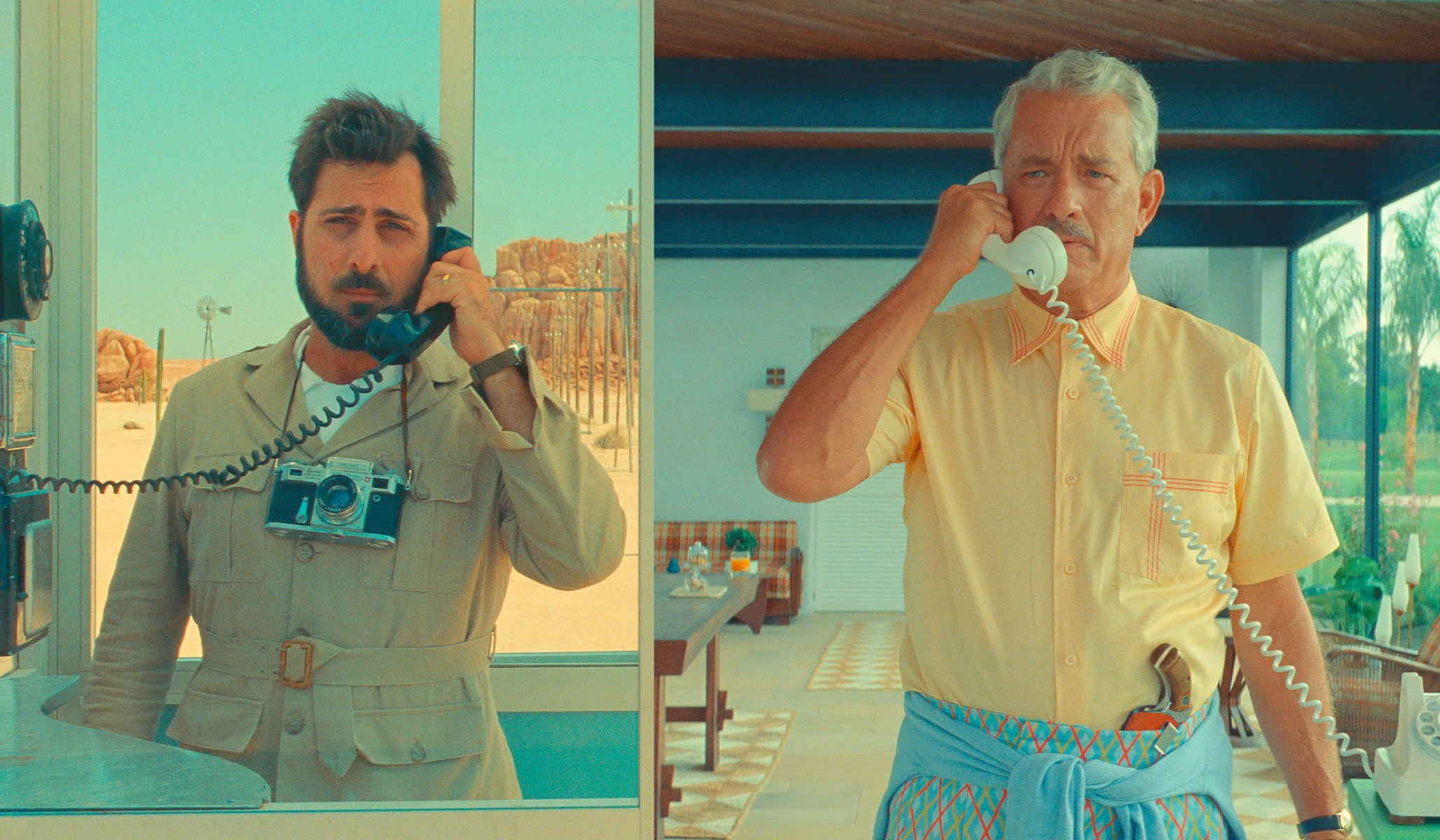Wes Anderson’s Asteroid City, set in 1955, is his first successful period film, which embraces escapism and nostalgia. Anderson’s earlier films, including Rushmore, The Royal Tenenbaums, The Life Aquatic, and The Darjeeling Limited, were incredibly moving due to their palpable sentimentality and need for retreat. However, in Asteroid City, these same qualities make the film seem as precious and limited as Anderson’s detractors once alleged. Nevertheless, the film expresses something genuine, described as superficially superficial, borrowing a phrase from Max Ophuls.
The film’s Fifties are introduced by alienated artists, including playwright Edward Norton and TV commentator Bryan Cranston, who try to define their place in the era through a documentary program about theater. This turns into a big-screen performance piece, a movie within a movie, where broken families and a busload of tourists and school kids visit a Midwestern military bomb-testing base established where an asteroid had penetrated the atmosphere, leaving a large, mysterious crater. The base and tourist site are operated by government personnel and local entrepreneurs whose customs and habits reflect their private and cultural obsessions.
This eccentric, pastel vision is overtly stylized, with distant John Ford mountains as flat as stage scenery and Wild West exteriors reduced to the two-dimensional limits of a ViewMaster stereopticon. However, the poignant domestic complications that used to be Anderson’s special insight into human relations are not lost in the film.
Asteroid City combines the suspense of playing a family board game with TV lore, featuring meticulous animated details. Each transition is presented in a different screen size, emphasizing the multimedia contrivance, including title-cards and intermission as at a theater program. Although the prismatic approach to storytelling is virtuosic, it might seem like Anderson is just showing off again, as in his previous enervating extravaganzas, including The Grand Budapest Hotel, Isle of Dogs, and The French Dispatch.
Despite the stunt characterizations and fussy narrative tricks, Anderson retrieves the signature farcical context that once felt profoundly personal. The fact that everything looks toylike and distanced in Asteroid City might be the point of that Atomic Age sci-fi title, recalling an America under threat of the Bomb, yet emotionally blasted and alienated by insecurity and faithlessness. Anderson uses the accoutrements of childhood to convey the sense of a haunted, spiritually vacant country.
Anderson’s vision syncs with post-Covid America, making Asteroid City a stylized hypothesis concocted to scrutinize the state of a fallen society. The best scenes, including Schwartzman and Hanks grieving while “saying the same thing,” a father and son recognizing each other for the first time, an actress and a photographer revealing themselves at a distance, an actor envisioning his departed soul mate, and brainiac kids trying out their smarts, are among Anderson’s finest. They’re breathtaking moments that piece back together the pure, childlike innocence we miss now more than ever.
When sequestered vacationers are notified that “the president lifted the quarantine,” Anderson’s reference to the Covidapocalypse is culture shock, more effective than Baumbach’s failed adaptation of Don DeLillo’s White Noise and better than the nihilistic sci-fi of Jordan Peele’s Nope.
An American visionary, Anderson embraces his bourgeois adolescence with poetic accuracy, with a boy floating forward to give help, a girl raising her hand to ask a question, a general revealing his ethnically specific history, and everyone dumbfounded by an extraterrestrial’s appearance. These uncanny instances also reveal the uneasy experiences and sensitivity that various characters articulate as “tragic calamity” and “strategically wounded.” Anderson had made that subtext too obvious in the slightly smug Moonrise Kingdom and the preening nastiness of The Grand Budapest Hotel.
No doubt the psychic wounds of the Covidapocalypse necessitated that Anderson create a fresh cosmology, like his witty fantasy of Broadway marquees: Death of a Narcissist, Circle the Wagons, Fruit of a Withering Vine, Asteroid City. In the film’s curtain-call finale, Actors Studio hopefuls chant and repeat “You can’t wake up if you don’t fall asleep.” Anderson’s story-time nostalgia salutes guilelessness and yearning.

